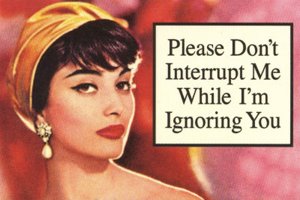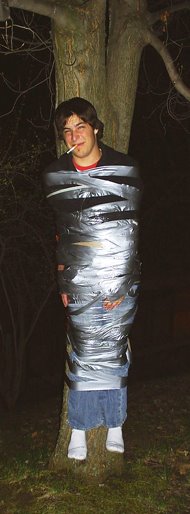 In the first post of this series, we explored a list of things, forces, people and situations to “actively listen to” so you could grow your creative practice.
In the first post of this series, we explored a list of things, forces, people and situations to “actively listen to” so you could grow your creative practice.
In the second post, we explored a list of things NOT to listen to for maximum creative output.
In this third and final post on creativity as active listening, I wanted to share a few observations from my own creative practice, along with a collection of probing questions to challenge your own:
1. Become an expert at NOTICING. That means discerning those little details that send your brain off to the creative races. Ancillary answers, happy accidents, internal comments, what’s around you, what doesn’t work and how quickly people understand and respond to your ideas. It also means Meta Noticing: Noticing the fact THAT you’re noticing. Because awareness is the first step towards mastery.
LISTEN TO THIS: What are you noticing?
2. Creation = Reaction. Literally. It’s an anagram. Same letters. (Cool, huh?) So, watch how you immediately react to things. Notice how you take in information and process experiences. Observe the mobilization of your inner resources, for these movements will allow you to create something beautiful.
LISTEN TO THIS: Are you listening and watching your initial responses?
3. Curiosity is active response to life. It’s about observation, followed by questions. Asking yourself, asking others, asking the world. Spying on the universe. Metabolizing the strands and tendrils of so many sparkling creatures and melding them into your own reality. Participating in the world around you as fully and actively as you possibly can.
LISTEN TO THIS: Are you asking enough questions?
4. Everything is fodder. I repeat: Everything. Material. Content. Ingredients. The world is one big-ass idea market, and it’s all F-R-E-E! There are no lines, and coupons are irrelevant. If you see something you like and you want, and you take it. Then, when you get home, you mix it with related thoughts and conjure something bigger, as you become bigger yourself.
LISTEN TO THIS: From which unusual and obscure places do you get your material?
5. Everything is prey. No limitations. Nothing is off-limits. Everything is fair game. Whatever the artist sees, he or she can use. Steal. Pluck. Insert. Capture. Marry ideas with other ideas. (Of course, this doesn’t mean plagiarism. It means capturing the essence of something and making it your own. So be careful!)
LISTEN TO THIS: What did you extract today?
6. Learn to freeze things. All this fodder, this material surrounding you – that you eat and perceive through your personal filter – you must be able to F-R-E-E-Z-E. That means you see something, take a Mental Polaroid of it and then clothespin it onto your psyche for further evaluation. As it freezes, you view it from all angles. You walk 360 degrees around it. You investigate it. Ask it questions. Maybe poke it a little. Rip its clothes off, strip it of every outer layer until its essence plops down on that imaginary interrogation chair, staring at you.
LISTEN TO THIS: Are you freezing your observations?
7. Listen, listen and listen. Listen to your work from a cool, objective distance. But be sure to do so in a way that prevents you from falling in love with your work. (This prevents emotions from disturbing the process.) See, that’s all writers do: they listen. To the world, to the people, to the ideas that zoom and fly in, to what their hearts are telling them to write. So, never stop listening. Identify the language of your own thought.
LISTEN TO THIS: Are you writing or listening?
8. Notice your soundscapes. Anyone who says, “I never have any good ideas,” or “I have writer’s block” or “There’s nothing good out there,” … IS A TERRIBLE LISTENER. To themselves. To the world. To others. No ideas? Bullshit. They’re everywhere! You just need to figure out what wants to be written. To figure out what your Muse is telling you. To figure out what new piece of material is standing by for your plucking. Remember: Opportunity never stops knocking – only YOU stop listening. So, saddle up. Finger through the jukebox of your creative mind and locate that ONE unique song you’re supposed to be singing. Then, belt it out!
LISTEN TO THIS: What’s your excuse for NOT having any good ideas?
9. Perpetually hunt for insight. Inspiration is ENDLESS and EVERYWHERE. And if you maintain an attitude of curiosity, exploration and expectation in everything you do, it’s yours for the plucking. So, be constantly scanning. Like one of those secret service dudes with one hand on their gun and the other on their earpiece. Ceaselessly looking around, sweeping the crowd and scrutinizing the scene for things and people that don’t belong. Allowing objects and events and people to let loose some movement in your mind.
LISTEN TO THIS: What little things do you always seem to notice?
10. Register the moment. Mark it down. Label it. Name it. Call it something. Then, put it where it needs to go. (Not in an overly specific way, as you don’t want to prematurely, cognitively commit to something.) Just enough where it can go somewhere with its friends. Where it fits in. Where it belongs. Where it can be returned to a later time and picked up exactly where it left off.
LISTEN TO THIS: Where does this new idea belong?
11. Scanning. Find interesting in anything. Study ordinary things intently. See yourself in anything. Plug whatever you perceive into the equations of your topic and your philosophy and expertise. Ask yourself how it relates to you, why it’s interesting, how it’s an example or symbol of something that’s important to you.
LISTEN TO THIS: What mundane things do you find fascinating?
– – –
REMEMBER: Creativity is the ultimate form of active listening.
So, learn what to listen to. Learn what (not) to listen to.
Practice being silently attentive and letting your art be subordinate to your life.
LET ME ASK YA THIS…
How are you using you ears as a creative tool?
LET ME SUGGEST THIS…
For the list called, “49 Ways to become a Idea Powerhouse,” send an email to me, and I’ll send you the list for free!
* * * *
Scott Ginsberg
That Guy with the Nametag
[email protected]
 Nobody talking about your business?
Nobody talking about your business?
Bummer. Perhaps I could help on a more personal, one-on-one basis.
Rent Scott’s Brain today!

 How many unsolicited referrals did YOU get this week?
How many unsolicited referrals did YOU get this week? 
 It’s incredibly convenient to observe someone’s inappropriate behavior and immediately pass judgment on that person.
It’s incredibly convenient to observe someone’s inappropriate behavior and immediately pass judgment on that person.
 Creative solutions.
Creative solutions.

 My parents’ favorite childhood tale to tell – mainly to embarrass me, I assume – is called “The Hand Raiser.”
My parents’ favorite childhood tale to tell – mainly to embarrass me, I assume – is called “The Hand Raiser.” You’re an artist.
You’re an artist. When you’re passionately telling people about your art, certain individuals will attempt to steal the wind from your creative sails.
When you’re passionately telling people about your art, certain individuals will attempt to steal the wind from your creative sails.
